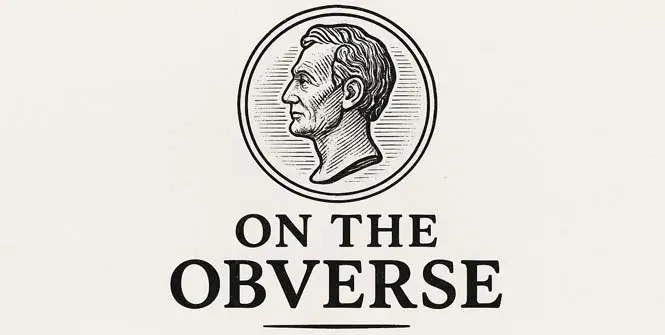- Home
- Jefferson Nickel
Jefferson Nickel (1938 - 2003) Price Guide & Values
The Jefferson Nickel, a staple of American pocket change, holds secrets that can turn a simple five-cent piece into a valuable collector's item.
Let's dive into the fascinating world of these coins, spanning from 1938 to 2003.
A Brief History
In 1938, the U.S. Mint introduced the Jefferson Nickel, replacing the beloved Buffalo Nickel.
Felix Schlag's design features Thomas Jefferson's profile on one side and his iconic home, Monticello, on the other.
This coin has jingled in pockets and filled cash registers for over six decades.
Key Dates: The Rarest of the Rare
1939-D: The Elusive Denver Mint
Imagine finding a coin worth 20 times its face value in your change jar! The 1939-D Jefferson Nickel is just that coin.
With only 3,514,000 minted, it's a prized catch for collectors. In Very Fine condition, it's worth about $10, but find one in Choice Uncirculated condition, and you're looking at $75 or more!
1950-D: The King of Scarcity
The 1950-D holds the crown for the lowest mintage in the series. Only 2,630,030 were struck, making it a true numismatic gem.
This coin caused quite a stir among collectors in the 1950s and 1960s, with prices soaring. While values have stabilized, it remains a key date for any serious collection.
Value Guide: From Pocket Change to Treasure
Most Jefferson Nickels you'll find in circulation are worth... well, five cents. But don't let that discourage you!
Uncirculated coins, especially those with "Full Steps" on Monticello, can be worth significantly more. The "Full Steps" designation means all six steps on Monticello are clearly visible – a sign of a strong strike and a coin that's barely been touched.
Wartime Silver: A Piece of History in Your Pocket
During World War II (1942-1945), the U.S. Mint produced nickels with 35% silver content to conserve nickel for the war effort.
These "War Nickels" have a distinct appearance and a large mintmark above Monticello. Finding one of these in your change is like discovering a little piece of history!
Errors and Varieties: The Spice of Collecting
Coin errors can turn an ordinary nickel into something extraordinary. Here are a few to watch for:
- The 1939 Doubled Monticello: Imagine Monticello looking a bit blurry – that's what you'll see on this error coin.
- The 1943-P Doubled Eye: Jefferson appears to be winking at you on this one!
- The 1945-P Doubled Die Reverse: The lettering on the back looks like it's seeing double.
These errors can significantly increase a coin's value, turning a five-cent piece into a treasure worth hundreds or even thousands of dollars!
Collecting Tips: Building Your Nickel Empire
- Start with a date and mintmark set. It's an achievable goal that will teach you a lot about the series.
- Keep an eye out for key dates and varieties. You never know what might turn up in your change!
- Consider investing in high-grade specimens. While pricier, they often hold their value well.
- Don't forget about error coins. They're like the Easter eggs of the coin collecting world!
Preserving Your Collection
Proper storage is crucial. Use non-reactive holders to keep your nickels safe. For valuable specimens, consider professional grading services like PCGS or NGC.
Not only do they authenticate your coins, but they also provide a standardized grade that can increase marketability.
The Future of Jefferson Nickel Collecting
While common Jefferson Nickels may not make you rich overnight, the thrill of the hunt and the potential for valuable finds make this series a perennial favorite among collectors.
Whether you're a seasoned numismatist or just starting out, the Jefferson Nickel offers a wealth of collecting opportunities.So, the next time you receive change, take a moment to examine those nickels.
You might just be holding a small piece of history – or a valuable treasure – in the palm of your hand!
Jefferson Nickels were minted throughout the following years:
1938, 1939, 1940, 1941, 1942, 1943, 1944, 1945, 1946, 1947, 1948, 1949, 1950, 1951, 1952, 1953, 1954, 1955, 1956, 1957, 1958, 1959, 1960, 1961, 1962, 1963, 1964, 1965, 1966, 1967, 1968, 1969, 1970, 1971, 1972, 1973, 1974, 1975, 1976, 1977, 1978, 1979, 1980, 1981, 1982, 1983, 1984, 1985, 1986, 1987, 1988, 1989, 1990, 1991, 1992, 1993, 1994, 1995, 1996, 1997, 1998, 1999, 2000, 2001, 2002, 2003.

Would You Like To Receive More Exciting News And Information About Coin Collecting Direct To Your Inbox?
Enter your best email address and first name below, check the boxes and click Send It To Me! now to get your FREE copy of On The Obverse newsletter.
